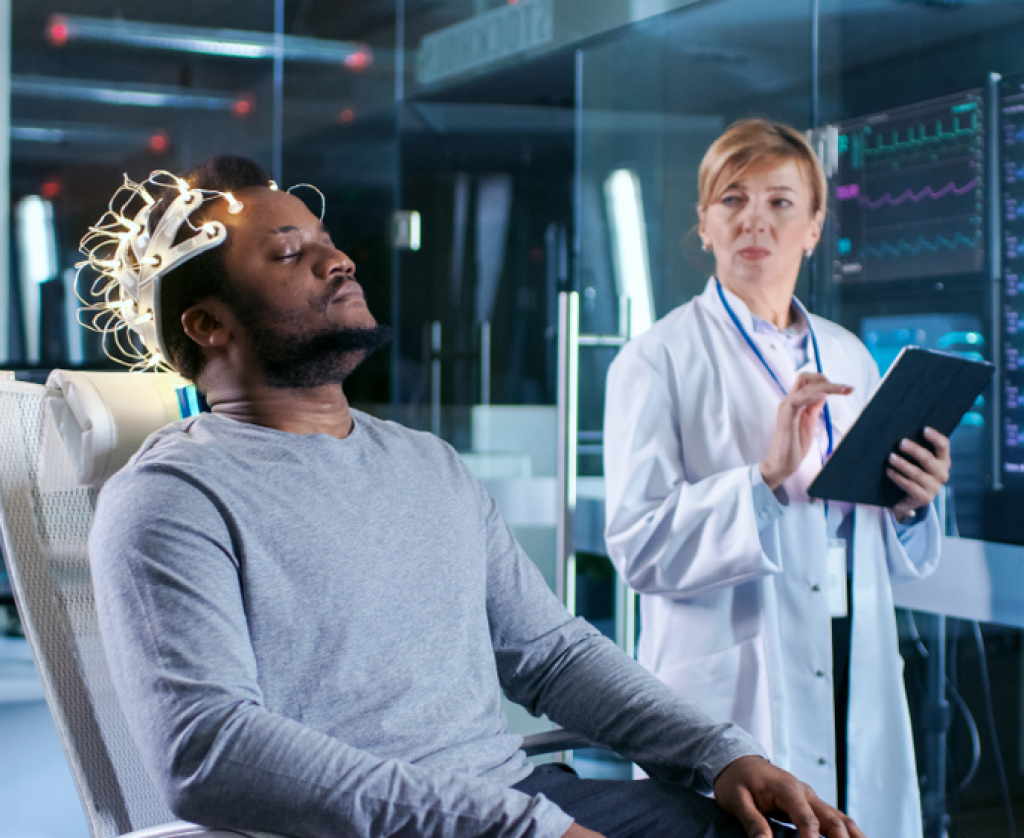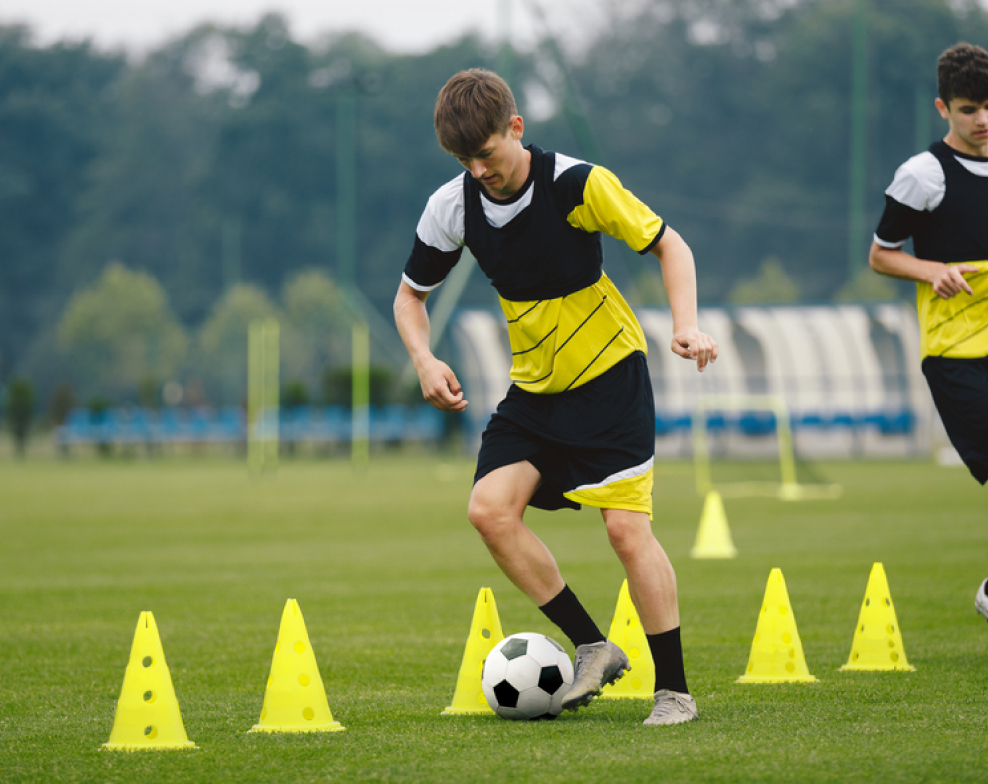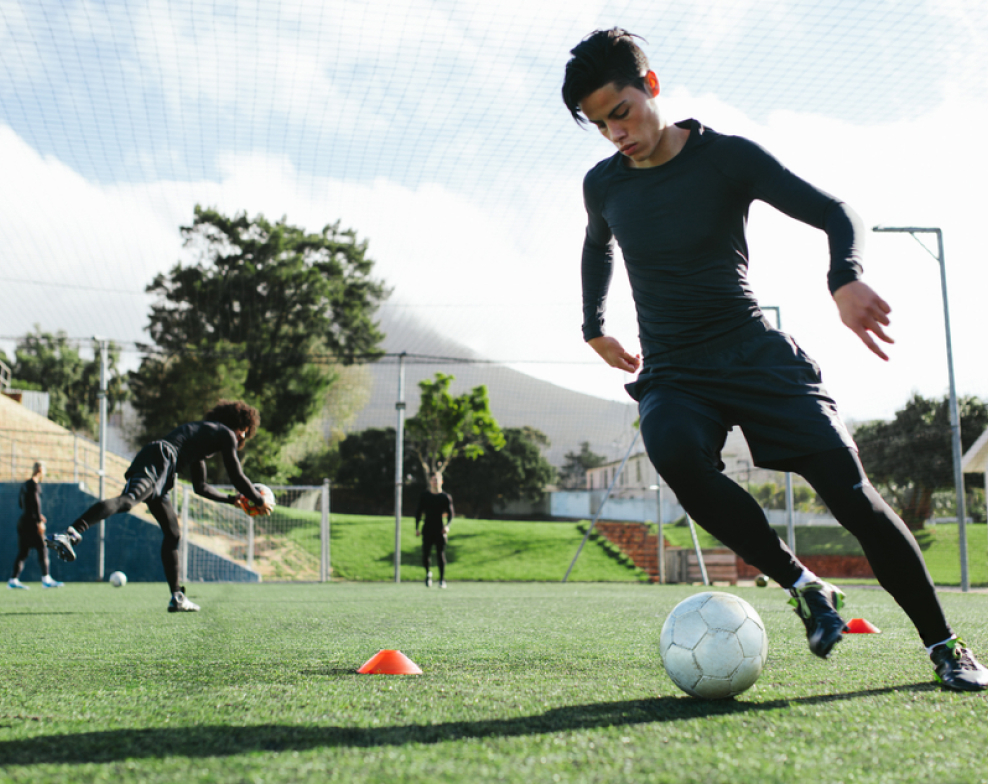For all sports, Athlete – Football – Boxing
The Cosmos Health Elite Sports Performance and Wellness Package outlines a comprehensive neuromodulation and wellness programme for athletes. It is designed to optimise performance and recovery in healthy individuals and is not intended to diagnose or treat medical conditions. Medical clearance and ongoing medical care remain the responsibility of the athlete’s own doctor or sports physician.


Brain Simulation Techniques
Such as Transcranial Magnetic Stimulation (TMS) and transcranial Direct Current Stimulation (tDCS), show promise in enhancing athletic performance by improving cognitive functions, including reaction times, decision-making, and focus. These non-invasive methods stimulate specific brain regions, potentially leading to improved motor skills, learning rates, and mental resilience. While research is ongoing, early studies suggest that when combined with traditional training, brain stimulation could offer athletes a competitive edge by optimizing both physical and cognitive aspects of performance.
Studies involving techniques like tDCS and TMS have been published in journals like "Frontiers in Human Neuroscience" and "The Journal of Physiology," indicating potential benefits in cognitive functions and motor skill learning, which are critical for athletic performance. Any use of brain stimulation within sports or performance contexts at Cosmos Health is delivered within clearly defined protocols, with safety screening and in line with current ethical and regulatory expectations, and should not be seen as a substitute for medical advice or treatment.
The Synergy Between Brain Function and Sports Performance
Achieving peak sports performance is a multidimensional pursuit that extends beyond physical training. While athletes often focus on improving their strength, speed, and technique, optimizing brain function can significantly enhance their abilities on the field. This lesson explores the intricate relationship between brain function and sports performance, examining the impact of the brain-body connection, the role of myelin sheath in optimizing neurological signals, and presenting compelling clinical research and case studies on brain training protocols that enhance reaction time, hand-eye coordination, focus, concentration, and relaxation.


The Brain Body Connection: Unveiling Potential
The brain serves as the central command center for the body, orchestrating complex movements, processing sensory information, and coordinating physiological functions. The brain-body connection is vital for athletes, as it allows for precise motor control and optimal performance. Through the seamless integration of neural pathways, the brain communicates with the muscles, enabling athletes to execute movements with precision and efficiency.
The Accelerator of Neurological Signals
The myelin sheath, a fatty substance that envelops nerve fibers, plays a pivotal role in enhancing the transmission of electrical signals within the brain. By optimizing the integrity and thickness of the myelin sheath, athletes can experience improved neural conductivity, leading to faster and more efficient signal transmission. Research has shown that specific training protocols can stimulate myelin growth and improve the overall performance of athletes.
Clinical research has shed light on the connection between myelin sheath optimization and sports performance. In a study published in the Journal of Neuroscience, researchers examined the effects of intensive motor skill training on the development of the myelin sheath. They found that athletes who engaged in focused and repetitive practice experienced increased myelination in the respective brain regions associated with the trained motor skills. This enhanced myelination translated into superior athletic performance, showcasing the profound impact of myelin sheath optimization.


Improved Hand Eye Coordination: Precision in Action
Hand-eye coordination is paramount in sports that require precise motor skills and split-second decision-making. The brain plays a central role in coordinating the movements of the hands and eyes. Neuroplasticity, the brain’s ability to reorganize itself, allows athletes to enhance hand-eye coordination through targeted training.
Clinical research conducted at the Center for Brain Health explored the impact of targeted brain training on hand-eye coordination in professional baseball players. By utilizing virtual reality simulations and neurofeedback techniques, the players engaged in intensive training aimed at improving the communication pathways between the visual cortex and motor areas of the brain. The study revealed significant improvements in hand-eye coordination, resulting in increased batting accuracy and defensive prowess.
Improved Focus and Concentration:
Harnessing Mental Resilience
Sustaining focus and concentration amidst distractions is vital for optimal sports performance. Neuroscientific techniques, such as TMS, tDCS, neurofeedback and mindfulness-based practices, have proven effective in enhancing an athlete’s ability to maintain focus and concentration


A study published in the Journal of Sport and Exercise Psychology explored the effects of TMS and tDCS treatments on collegiate track and field athletes. The participants underwent a treatment program that targeted brainwave patterns associated with focused attention. The results demonstrated enhanced focus and concentration, leading to improved performance in training and competition settings.
Additionally, mindfulness-based practices, including meditation and visualization, have shown promising results in improving an athlete’s ability to stay present and perform in the “flow” state. Research published in the Journal of Applied Sport Psychology demonstrated that athletes who incorporated mindfulness training into their routines experienced heightened concentration, reduced anxiety, and improved performance outcomes.

Improved Relaxation: The Calm Amidst the Storm
In high-pressure sports environments, relaxation plays a vital role in optimizing performance. Excessive tension and anxiety can impair motor skills and decision-making. By employing relaxation techniques, athletes can foster a calm and composed mental state, allowing them to perform at their best.
Clinical studies have shown the benefits of relaxation techniques in sports performance. A study published in the Journal of Applied Physiology investigated the effects of progressive muscle relaxation on elite gymnasts. The findings revealed reduced muscle tension and enhanced performance, suggesting that relaxation techniques positively influence an athlete’s physiological and psychological states, leading to improved results.

